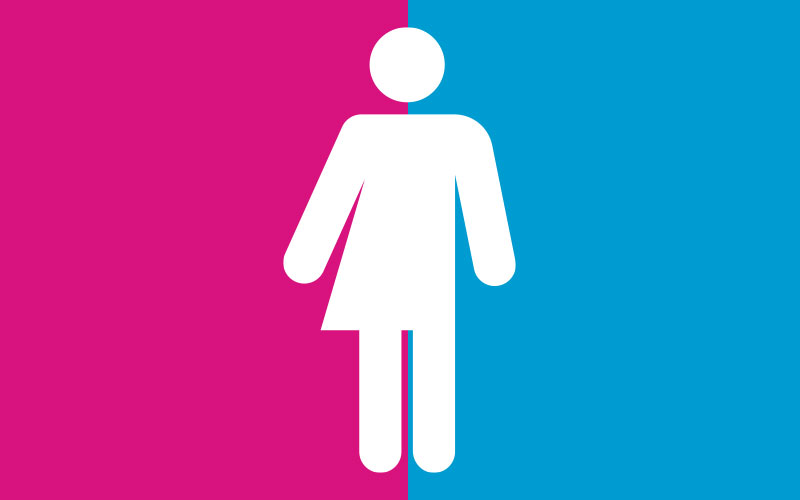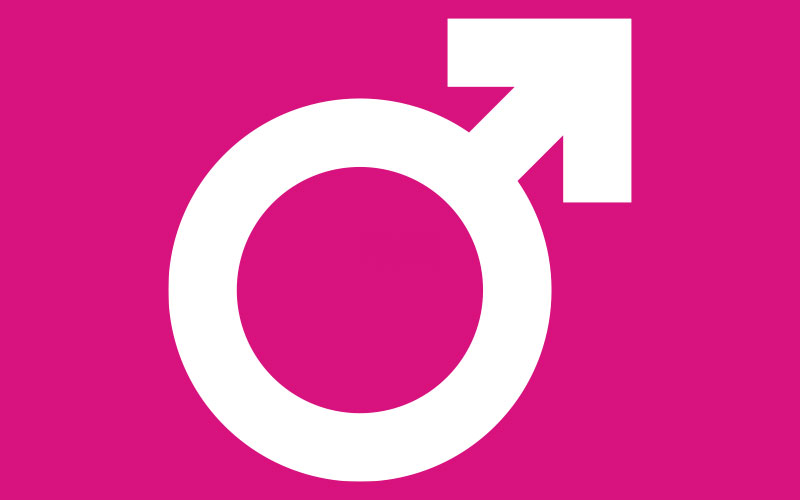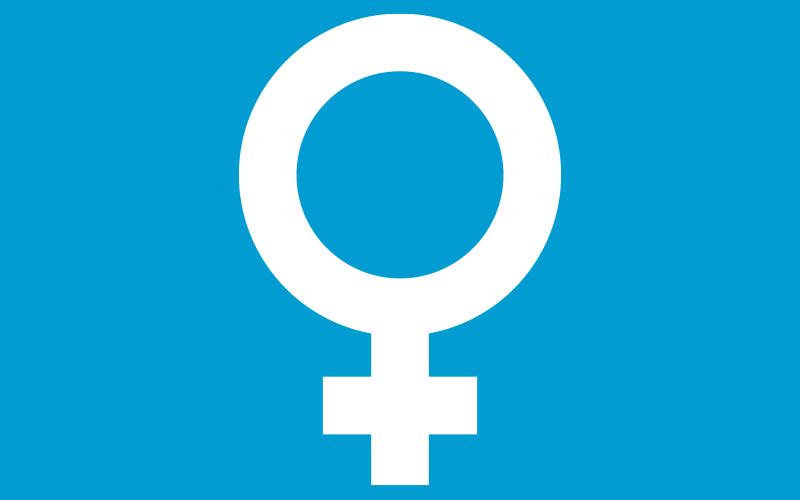Senior Lecturer in Biomedical Science Alex Liversidge looks at gender and sex in relation to the health service and biomedical science.

The chromosomal make-up of an individual (genotype, usually 46, XX or 46, XY) determines the appearance of the external genitalia at birth. From this, the assignment of female sex or male sex is made when a child is born. This is sometimes referred to as biological sex and in Western cultures is binary – a person belongs to one category or the other with no other options. In contrast, gender is an internal and personal perception of one’s identity. It is a more subjective, cultural attitude – “femaleness” or “maleness”. A person is described as cisgender if their gender corresponds with the sex assigned to them at birth. However, transgender individuals do not identify with the gender or sex they were assigned at birth.
Transgender and gender diversity
If we move away from the traditional Western notion of male/female, we can consider that gender exists as a spectrum. Following the terminology recommended in the latest Standards of Care guideline issued by the World Professional Association for Transgender Health, transgender and gender diverse (or TGD for short) will be used here to be inclusive to the varied communities that exist globally.
This identification with an alternative gender from that which is assigned at birth, or no gender (gender incongruence), is not in itself a medical disorder. However, some people who are TGD may develop a gender dysphoria, which can lead to significant mental harm. To reduce or remove the gender dysphoria, some (not all) individuals seek gender-affirming treatments.
Gender-affirming treatments

Some TGD individuals will choose not to have any gender-affirming treatment. Others will choose hormone therapy or surgery, and some pursue both. This process is known as transitioning. Social transition is a process that includes changes to the way a person dresses or behaves. In the UK, medical transition is supported by the NHS, but it is an under-resourced specialty with long waiting lists.
TGD pregnancy
Advances in gender identity medicine and andrology services have enabled pregnancies to occur in female–to–male TGD individuals post-transition. Although hormone therapy can reduce female–to–male fertility, it is sometimes reversible. Surgical transition for this group is not always successful, involving several major operations with the potential of significant scarring and other consequences. Therefore, some female–to–male TGD people transitioning may retain their childbearing potential, whether intentionally or otherwise. Research regarding trans-masculine pregnancy is a new development; however, the reproductive desires of this group appear to be similar to cisgender women. Expert opinion suggests that the number of pregnancies among trans men is growing and will continue to increase in the future. Unplanned pregnancies also need consideration given that the majority of TGD individuals seeking transitional medical care are of reproductive age. In one study of trans men who had been pregnant and given birth, nearly half of those who had not used testosterone hormone treatment had an unplanned pregnancy. Of those who were taking testosterone, a quarter of pregnancies were unplanned.
Population estimation

In England and Wales, for the first time in 2021, the national census included a question on gender identity. This voluntary question was asked of those aged 16 years and over. It was added to provide the first official data on the size of the transgender population in these countries. The question asked “Is the gender you identify with the same as your sex registered at birth?” It had the option of selecting either “Yes” or “No” and writing gender identity into a text box. Overall, 45.7 million (94.0% of the population aged 16 years and over) answered the question. In total, 45.4 million (93.5%) answered “Yes” and 262,000 (0.5%) answered “No”. The remaining 2.9 million (6.0%) did not answer the question. Of those 262,000 people answering “No”, indicating that their gender identity was different from their sex registered at birth, there were 48,000 (0.10%) identifying as a trans man, 48,000 (0.10%) identifying as a trans woman, 30,000 (0.06%) identifying as non-binary and 18,000 (0.04%) who wrote in a different gender identity. Scotland also asked a question on trans status for the first time in the census in 2022, the data for this have not yet been published. It is apparent that there is a small, but significant, population of TGD individuals in any given society.
For the first time in 2021, the national census included a question on gender identity
Healthcare challenges
To record a person’s gender (or sex as it is usually referred to) in a healthcare setting can be problematic. To document a person by their assigned gender at birth can lead to misgendering and is potentially harmful to the mental health of a TGD person. But, alternatively, to record their gender without acknowledging the assigned gender at birth also places them at risk. Many aspects of healthcare are based on binary guidelines that are in place for a variety of reasons, but an important one is childbearing potential.
An example of this is in blood transfusion. Hospital blood banks work in compliance with guidelines that explain which blood components females should receive to prevent the potentially life-threatening complication in pregnancy of haemolytic disease of the foetus and newborn (HDFN). The concern is that, in gender affirmation and transitioning, childbearing potential may be missed and the risk of anti-D sensitisation and HDFN is therefore increased.
Transgender transitioning presents hospital blood transfusion laboratories with several issues.
The first is that the laboratory may receive a sample and request form with the patient labelled male and issue blood components based on this gender.
To prevent HDFN, British Society for Haematology (BSH) guidelines recommend that “women of childbearing age” receive specific antigen-negative red cell donations (CDE− for RhD-negative women, K− for all women). If the laboratory receives a sample that is from a female–to–male transgender individual and it is labelled as male, or is from a non-binary individual and the gender is not described, they are at risk of being issued unsuitable blood and components, i.e. those that do not meet the recommendations within the guidelines. In the UK, because of the potential for morbidity and mortality,this is classified as a “serious adverse event” and is reportable to the Medicines and Healthcare products Regulatory Agency and Serious Hazards of Transfusion as a “special requirements not met” (SRNM) incident.
All future transfusion requests would rely solely on antibody screening results

Hospital blood transfusion departments may receive an antenatal sample from a service user who identifies as male. How this is processed in the laboratory depends on the laboratory information management system (LIMS) in use, the age of the system and what IT rules are in place. For example, the LIMS may not allow entry of an estimated date of delivery or may prevent the issue of anti-D immunoglobulin when clinically indicated and prescribed if “M” is inputted in the gender field. This, again, is in contravention of published BSH guidelines to prevent HDFN.
The final consideration is that people who have transitioned can request, and are granted, a new NHS number that is not linked to the medical history of the gender assigned at birth. This presents a problem for laboratory staff entering patient details into a LIMS and failing to recognise any previous existing transfusion record. Two records from the same person with different names and NHS numbers would not be merged unless the laboratory was informed that they were connected. All future transfusion requests would, therefore, rely solely on antibody screening results with no historical antibody information. This is against the guidance published by BSH for pre-transfusion testing, which states that “duplicate records should be avoided to prevent essential transfusion or antibody history being overlooked”. The clinical consequences of this error are missed incompatibilities, SRNM errors and immediate or delayed transfusion reactions with a potential for major morbidity or mortality.
It should be noted that it is illegal under the Gender Recognition Act 2004, to record or disclose the transgender status of an individual without their consent.
Discrimination
The circumstances described above illustrate that provision of healthcare is not uniform for all patients in the UK and, therefore, could be considered indirectly discriminatory to the TGD population. It is also not acceptable to ignore the gender information provided and overwrite as female to fulfil published guideline criteria since this information may appear on medicine labels or reports issued to the patient. This is also considered direct discrimination and is potentially harmful to the mental wellbeing of the patient.
What can we do?
In the clinical area, the use of a two-step method for collecting sex and gender information has been found to be superior at identifying transgender individuals in comparison to other methods. Consider developing a trust and/or departmental policy on gender in healthcare, which could introduce the use of a consent form for TGD individuals to allow pertinent information to be recorded on LIMS patient notes. TGD training for lab staff with responsibility for booking samples into LIMS should be included to lessen the chances of assuming the wrong gender. Consideration should be given when developing a new LIMS to allow gender to be recorded easily (with consent).
Alex Liversidge is a Senior Lecturer in Biomedical Science at Leeds Beckett University.
Image credit | iStock
